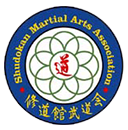Nippon Jujutsu: Origins, Myths, and Misconceptions
By Davey, H. E.This article first appeared in the "SMAA Journal" Volume 16, Issue 4.
What is jujutsu?
What are common misconceptions about this martial art?
To understand the origins of jujutsu it is necessary to grasp its roots in Nippon, the island nation of Japan. While many Westerners have heard of jujutsu, it is often misunderstood. Among these misunderstandings are the actual roots of Nippon or Nihon jujutsu, and the idea that jujutsu in its original form is a wholly unarmed martial art. Other misconceptions have to do with what constitutes authentic techniques and the original ranking system used in most forms of ancient jujutsu.
“JUJUTSU:” A GENERIC NAME
Within the majority of classical bujutsu (“martial arts”), the study of weaponry was of primary importance, just as it is for modern-day soldiers. However, some ryu (“systems”) also included empty-handed techniques, which were married to the ryu's weapons. These forms of grappling were generically called “jujutsu.” This very general word didn’t exist before the Edo era, after around 1600. The word “jujutsu” may actually stem from non-samurai, who were interested in martial arts, but who weren’t often well-versed in the ins and outs of the large variety of dissimilar ryu that existed at this time.
CATEGORIES OF CLASSIC JUJUTSU
In general, jujutsu during the Edo period was practiced by bushi, ashigaru (“foot soldiers”), torikata (“medieval police”), and civilians. In genuinely old systems it considered the fact that the bushi might be wearing armor and facing a similarly clad opponent, both of whom had to be able to fall safely as well as perform other actions while wearing two swords. The wearing of arms and armor limited how one could grapple and fall as well as the techniques that could be used.
Striking techniques were less common (to protect the hands and feet from being injured when hitting armor), and if they did exist, were sometimes done using the butt end of weapons. Joint locking techniques needed to consider where different pieces of armor came together, and in this sense, they had something in common with cutting with a sword. So, if you visit a dojo claiming to teach a version of really ancient jujutsu try to visualize the techniques you see in the context of two people wearing arms and armor. If you can’t see how the techniques could be done under these circumstances, you might want to ask the teacher about this.
JUJUTSU IN THE WEST
Jujutsu is uniquely Japanese, as are all koryu bujutsu and budo. The old forms of jujutsu stem from martial traditions born before the ending of the samurai era in 1868. Newer forms of jujutsu, which invariably and logically must come from the pre-1868 koryu jujutsu, can still be thought of as Nippon jujutsu. There is a clear process at work here by which authentic techniques and battle-hardened principles were handed down.
RECOGNIZING NIPPON JUJUTSU
"I'm certain my teacher is showing us real Japanese-style jujutsu (or kenjutsu, bojutsu, etc.). Some of his movements are identical to the ones I've seen in samurai movies from Japan."
I’ve heard this before as well. So have Steve Fabian Sensei, Ohsaki Jun Sensei, Kevin Heard Sensei, Wayne Muromoto Sensei, and other longtime Nippon jujutsu teachers at SMAA. Speaking for myself, I’m sympathetic to anyone’s desire to have faith in their sensei, but this kind of statement reveals a huge lack of knowledge concerning Japanese martial arts in general.
Samurai movies are not usually produced by martial arts experts. Their goal isn’t educational, but aimed at entertainment, and real koryu bujutsu is often deceptively simple. It doesn’t necessarily look good on film. Those aren’t real swords in Seven Samurai, and while sometimes real martial artists are consulted in movie-making, their goal is still to entertain more than to recreate.
Explaining how to recognize authentic Nihon jujutsu, beyond asking for proof of certification from valid groups, is a huge subject. Fabian Sensei, a Director for the SMAA Jujutsu Division and seventh dan, did a fine job of addressing this for our journal. You can find his article here.
Learn More at an International Martial Arts Association
Are you researching a specific ryu, a particular dojo, or jujutsu in general? You can send your questions to leaders in the SMAA Jujutsu Division; we’ll be happy to help! For other questions about our international martial arts association, call (734) 720-0330 or submit a contact form here.
*Pictured in this article: Stephen Fabian Sensei, Director of Traditional Jujutsu.

